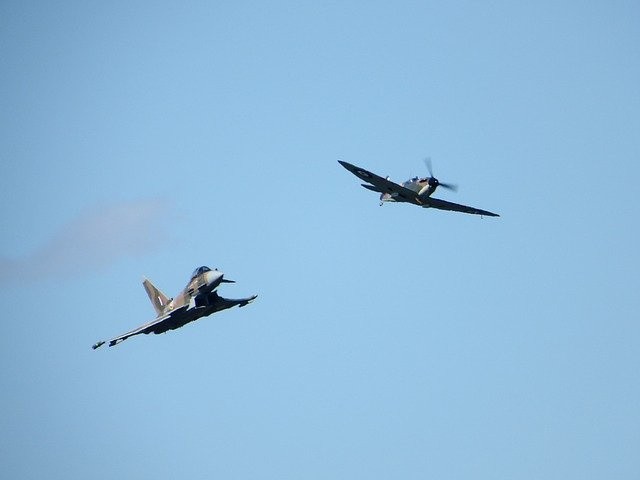
The Ministry of Defense sent six Royal Air Force fighter-interceptor jets into the path of Russian aircraft, as they were near British territory.
Large Russian bombers were detected on radar while heading to north-west off the Scottish coast on Saturday.
Typhoons and air-to-air refuelling aircraft flew to the unknown Russia aircraft. These interceptors are part of the Quick Reaction Alert programme that were sent to sortie in pairs.
Two pairs of Typhoon interceptors came from the RAF airbase at Lossiemouth, Moray at north-east Scotland. Another third was dispatched from the RAF airbase in RAF Coningsby at Lincolnshire,
It is normal for the Royal Air Force regularly send sorties to prevent intrusion by other countries air forces.
Identification of the aircraft which caused the commotion is a Tupolev Bear that used to be a strategic bomber and long-range patrol plane. The exact number of actual bandits were not revealed by the Quick Reaction Alert Programme of RAF. This bomber was made for long-range flying in its heyday.
In formation, two pairs of Typhoons went close to the large Tu-142 bear that dwarfed the smaller fighters. After going near, the 1st and second pair just broke off and flew away, next to the third pair aggressively forced the Tu-142 to give up, trying to enter.
All RAF Lossiemouth crews are constantly on standby for quick alert incidents.
According to the RAF official, it was a normal response to other than British aircraft. Russian aircraft are disallowed to cross unless there is permission given, British and NATO allies work together in these instances.
RAF Lossiemouth added that the Russian bombers were not able to get in UK airspace.
RAF said The Russian bombers were followed by Typhoon jets (RAF) and Quick Reaction Alert aircraft from NATO allies (France and Norway). Keeping track of the bombers in the near airspace.
The RAF confirmed that is ready to deal with unknown aircraft and other airborne dangers.
It was not the first time that Lossiemouth sent interceptors after sighting of planes headlong into UK space. Russian Tu-142 were seen off Shetland by radar arrays, as they passed near UK airspace.
Sorties of RAF Typhoons were sent out about 10 instances since last year with a higher frequency of Russian plane getting close to UK airspace. These Tu-95 are not a threat to military fighters but to the civilian aircraft, this can be dangerous.
RAF Lossiemouth made it clear why they shoo away unknown aircraft. Here is why it is done.
These planes were Tupolev Tu-142 that are variants of the Tu-142 Bear-F and a Tu-142 Bear-J. Bear F is used for anti-sub operations, and the Bear-J is used for communications, and as a relay platform. Both large planes pose dangers that will be explained.
Most of the time, these planes operate and does not transmit an IFF signal (Identification Friend or Foe) that can be seen by other craft.
Whenever a plane with IFF is found and nothing is known about is purpose. Air controllers will steer civilian air traffic away from the anomaly.
Behind the Bear-J, it has a very long trailing wire antenna five miles that can be dangerous to civilian airlines, getting tangled.
British Typhoon jets keep the Russian planes under watch and sortieing, also keep civilian planes free from a mishap.
© 2025 HNGN, All rights reserved. Do not reproduce without permission.








